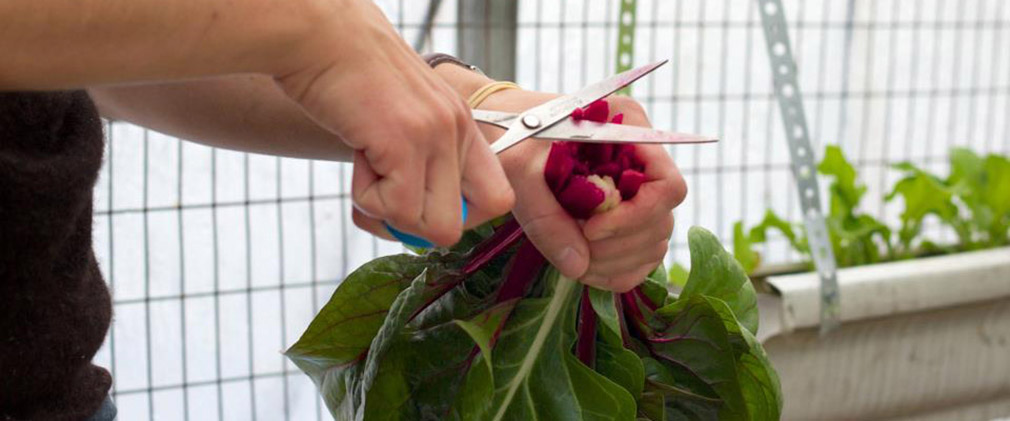Raft to Plate: The Aquaponics Harvest
Harvesting. It’s one of the most fun and rewarding tasks to do on the farm. Cutting a large bunch of celery three months after it was started from seed is satisfying. However, every hour spent harvesting is time we are not seeding, planting or farm planning, so the harvest must happen efficiently. Many farmers calculate the dollar amount they harvest per hour to assess their pace and the net value of certain crops. Plants must also be handled with care, not just to ensure the quality and safety of the product, but also to protect the remaining portion of the plant that will hopefully re-grow to yield multiple harvests.
At Cylburn, we harvest our vegetables every Friday for sale at the year-round Waverly Farmers Market on Saturday mornings. We sell through the Farm Alliance of Baltimore City, a network of urban farms in Baltimore that runs a collective market stand. This relationship enables us to maintain connections with other Baltimore City growers and sell our products at market without the full responsibility of having our own stand. If we didn’t have this resource, we would need to send staff to market every week and ensure enough supply to keep the stand full, which is not possible at our current scale.
Harvests begin early on Friday mornings. We start by cleaning and sanitizing our workstation, washbasin and tools, and then assess what we plan to pick. There’s a strategy to creating a harvest list. While those beautiful heads of lettuce might grow bigger if left in the water another week, a spell of warm weather could cause the plants to bolt, the first step in the flowering process that begins with an elongated stalk and bitter tasting leaves. Or perhaps the leeks should be picked a week early so we have space to plant our kale seedlings. Every decision is a careful balance between growth rate, pest pressure, space availability, and what we think will do well at market that week.
After we create a harvest list, the fun begins. Some plants like kale, chard and cut-and-come again greens will yield multiple harvests. Other crops, like head lettuce, bok choy or celery are cut at the very base of the plant and will not re-grow. Fast growing, high value, multiple harvest crops like mustard mix, arugula or watercress have a distinct economic advantage over slower-growing, single-harvest crops like celery. However, for us, diversity is as important to success at market as it is to maintaining a healthy farm. There’s only so much mustard people want to eat!
Following harvest, all produce is washed. Things like tender salad greens are dried before being packed into coolers and delivered to Real Food Farm Friday afternoon. The market team picks up our produce early on Saturday mornings and brings it to the farmers market. Stop by the Farm Alliance of Baltimore City’s table at Waverly this Saturday and you can sample our salad greens, celery, sorrel and mustard.
